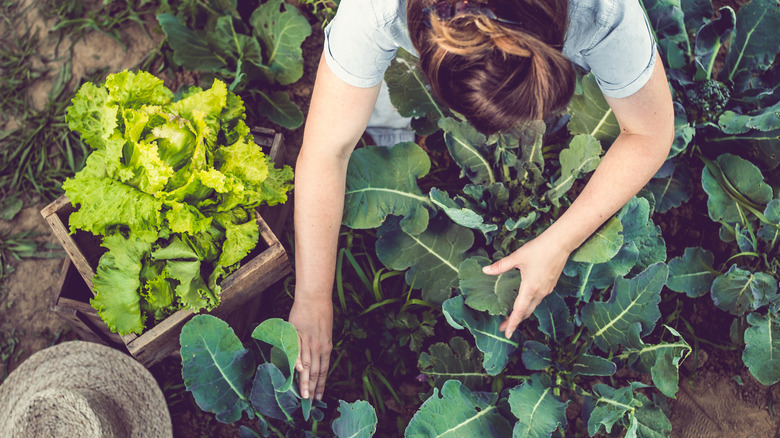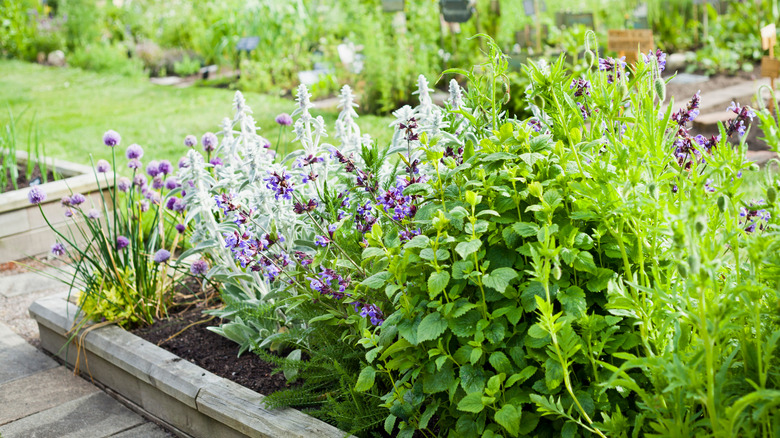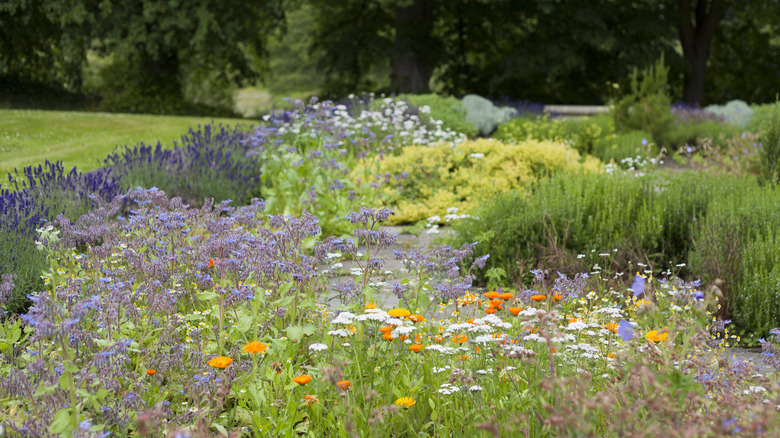What Are Edimentals? What To Know About The Newest Garden Trend
Edimentals, a portmanteau term of "edible" and "ornamental," is one of the newest gardening trends that will bring a different dimension to your horticultural craft. An edimental is a plant that is both edible and ornamental, combining the best of both worlds — enhancing the beauty of your garden while providing fresh produce. This fusion of edible and ornamental plants is reshaping how we view and use our gardens, blending aesthetics with functionality in a unique and sustainable way.
The modern "edimental" idea was coined and popularized by one of the world's leading experts in this niche domain, Stephen Barstow, through his blog and book, "Around The World In 80 Plants". However, this concept isn't entirely new; many traditional gardens have featured edible plants with ornamental value. The edimentals trend today emphasizes this dual purpose more explicitly, encouraging gardeners to think about both the visual appeal and the culinary use of their plants.
For example, rainbow chard can add a splash of color to a flower bed, and its leaves are delicious in salads. In urban areas or small gardens with limited space, edimentals are an especially practical solution. They allow gardeners to maximize their space by nurturing plants that are both decorative and delicious. By growing your own food, you reduce your carbon footprint and have control over how your food is grown. For those with children, edimentals provide an educational opportunity to teach about where food comes from and the importance of plant life in a fun, hands-on way.
Popular edimental plants
When selecting plants for an edimental garden, you're in luck, as you have no less than 20,000 species to choose from! That's right — there are over 20,000 types of edible plants in the world. With an edimental garden, it's all about plants that look good and taste good in your favorite recipes. Edimental plants can be annuals or perennials, shrubs or trees, and everything in between. When selecting your plants, it's essential to consider your climate, the size of your garden, and your gardening skill level.
Among the most popular choices in edimental gardening are herbs like lavender, chives, sage, rosemary, and thyme. These herbs are culinary staples in many cuisines and add a fragrant and decorative touch to any garden space. Vegetables such as Swiss chard and kale, particularly the ornamental varieties, artichokes, french beans, and eggplants, are also favored for their vibrant colors and textures. They provide a visual feast in the garden and a literal one on the table — they're also low-maintenance and incredibly nutritious.
Fruit trees and bushes like apples, pears, gooseberries, and currants are key players in the edimental space. These plants offer the double benefit of producing delicious fruits and being visually striking elements in garden design, especially when they bloom or change colors with the seasons. Additionally, edible flowers such as nasturtiums, marigolds, chamomile, and borage are increasingly popular for their dual role as both garnishes for dishes (or infusions for delicious teas!) and vibrant, eye-catching additions to garden beds.
How to design and care for your edimental garden
Designing an edimental garden is an artful balancing act between aesthetics and practicality. To ensure year-round visual appeal, mix perennials with annuals and incorporate plants like evergreens alongside seasonal edibles. A thoughtfully planned scheme of colors, textures, and forms among the plants can harmonize the overall look. Practicality is also key — place frequently harvested plants like herbs and salad greens in accessible locations. By carefully selecting and positioning your plants, a functional edimental garden can bring joy and bounty throughout the year.
Caring for edimentals involves a blend of traditional gardening techniques and mindful practices tailored to their dual nature. Firstly, understanding the specific needs of each plant is crucial; some may thrive in abundant sunlight, while others prefer shaded areas. Herb spirals, special containers, and layered planting methods can help group plants with similar needs for more efficient care. Opt for organic gardening methods, especially since many edimentals will end up on your plate. Think natural — using non-toxic fertilizers and pest control to avoid harmful chemicals.
Regular harvesting is key. It will provide fresh produce for your meals and also encourage further growth and vitality of the plants. Keep in mind that the health and appearance of your edimental plants are equally important, as their ornamental value is a significant aspect of their appeal. With these considerations, your edimental garden can flourish, providing both aesthetic beauty and a harvest of fresh, home-grown edibles for a sustainable and enriching gardening practice.


